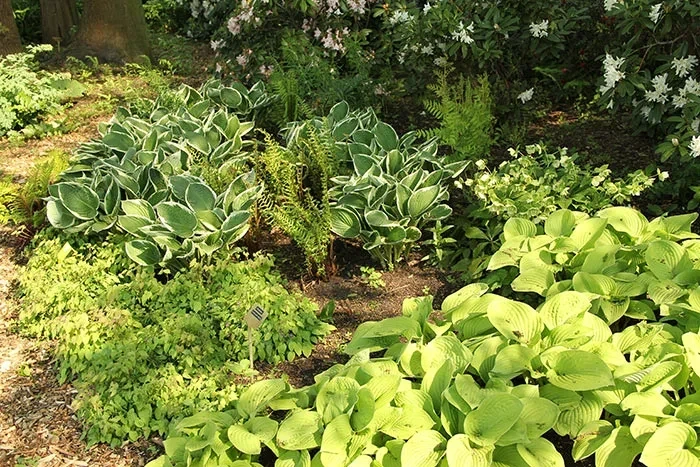Gardens evolve over time; their designs are not set in stone. Often the needs of the plants themselves demand some changes to be made.
Perhaps a plant outgrows its space, or it matures to a point where its flowering diminishes. (Related: How can I tell if my plant needs dividing?) Plants can be dug and moved to create better spacing and growing conditions for all. Perennials can also be lifted and divided into pieces that can be replanted in the same spot and into new places in the garden.

The hostas, epimediums and ferns in this garden could be divided and/or moved in spring to eliminate gaps and expand the planted area.
Spring is an excellent time to rearrange plants in your garden, but remember these points:
Dividing and transplanting are best done on cool, cloudy days to minimize stress to the plant. If the weather won't cooperate, do your replanting in the late afternoon, when the air is cooling and the sun is lower in the sky. Provide some shade to the transplant the next day with shade cloth or by simply moving a lawn chair, wheel barrow or other bulky item over or in front of it.
Prepare the new planting site before you dig up the plant in question, including digging an initial planting hole. If it proves to be too big or small, you can quickly adjust it.
If it hasn't rained lately, water the plant a few hours before you dig it up.
If there's a good amount of growth on the plant, cut it back by about two-thirds. This will reduce moisture loss through the leaves.
If you're not dividing the plant, but simply moving it whole, keep the root ball in tact and surrounded with soil. Place it in its new hole at the same height as it was growing. Add water and let that soak down, then fill with soil and water it again. If you're dividing the plant, follow these steps.
One of my favorite guides to caring for perennials from initial planting to dividing and more is still Tracy DiSabato-Aust's classic The Well-tended Perennial Garden.